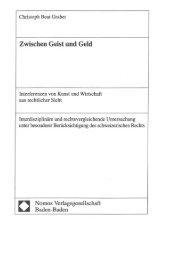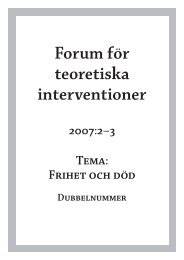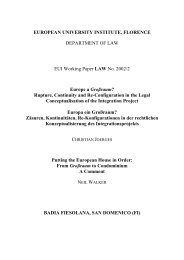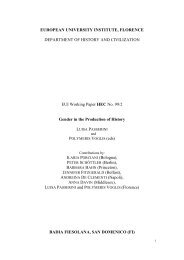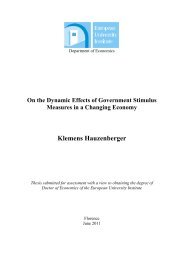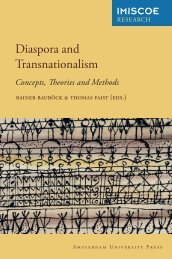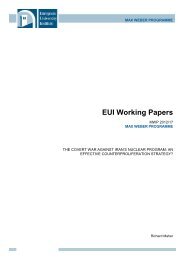Sinziana-Elena Poiana Ioana Lupea Irina-Madalina Doroftei Alina ...
Sinziana-Elena Poiana Ioana Lupea Irina-Madalina Doroftei Alina ...
Sinziana-Elena Poiana Ioana Lupea Irina-Madalina Doroftei Alina ...
Create successful ePaper yourself
Turn your PDF publications into a flip-book with our unique Google optimized e-Paper software.
Concluding remarks<br />
The two case studies presented focused on analyzing challenges of existent practices, rather than<br />
national traditions, because a customary practice reaches a widespread national dimension perchance<br />
by negligence and perpetuating old ways and lack of clear policy rather than by implementing<br />
coherent traditional values and national policy discourse thereof.<br />
So far, the cases analyzed show that the policy discourse and the public discourse are significantly<br />
divided on the issue of segregation of Roma children in school. The debate has been ongoing,<br />
fluctuating up and down on the public agenda, however it had never reached so high up on the agenda<br />
as it did when a Romanian Court of Appeal decided on penalizing a primary school teacher with a<br />
10,000 Euro fine for not allowing a Roma child to attend her class. While the policy discourse was<br />
building around ensuring the right to education of the child, the public discourse was biased towards<br />
the teacher’s position. However, it never reached the status of a consolidated public policy.<br />
Therefore the first case, The civil rights movement that never happened: The “racist teacher” and<br />
Roma segregation in Romanian schools (Alleged Discrimination against Roma ), analyzed how the<br />
situation mentioned above concerning a Roma child influenced the public agenda, even though there<br />
was no evidence in the end that the teacher was discriminating on grounds of ethnicity.<br />
Roma activist groups are still reporting cases of Roma children who are still denied enrollment in<br />
mainstream schools. These cases have not reached the agenda and have not been addressed before in<br />
any way in the national policy discourse. They rather had the constructed effect of a novelty. The case<br />
analyzed has had the effect of a break in the wall, and showed that what is registered as discrimination<br />
can and will be sanctioned as such, creating the effect of uninviting the perpetrators of long<br />
established practices, and challenging them, rather than perpetrating the status quo, into re-examining<br />
their well-established ways. Whether this challenge will be taken further, to building a solid policy<br />
discourse, remains to be seen.<br />
The second case, On the right to an education environment that is free of religious symbols, is relevant<br />
for public policies regarding the display of religious symbols in the classrooms. The debate on the<br />
public display of religious symbols in schools was pushed up on the agenda in 2006, when a high<br />
school philosophy professor accused his employer of breaching the rights of the non-orthodox students<br />
by hanging on the walls representations of Christian figures.<br />
While in the first case study presented the reference is made to an unfortunate practice that got out of<br />
hand especially because of the lack of vision, policy and national standards, the second case examines<br />
a challenge to a newly founded national tradition. Despite the presumed separation between state and<br />
church, the main discourse has been in favor of the state’s actions to support the Romanian Orthodox<br />
Church, by virtue of the absolute Orthodox majority of the Romanian population and the public<br />
function that the Church is thought to fulfill. Even though the debate on teaching religion in schools<br />
had been ongoing since it became a mandatory subject in January 1990, talking about displays of<br />
Christian representations in school seemed a rather contentious topic for debate. However, in 2006 Mr.<br />
Emil Moise, a philosophy professor filed a complaint with the National Council for Combating<br />
Discrimination (CNCD) claiming that paintings of Christian figures that hanged on the school’s walls<br />
were a breach of the non-orthodox students’ right to free choice of confession and impeded the free<br />
development of the spirit of the rest of the students. By analyzing this case, it became clear that there<br />
is a newly established tradition pushed to the public agenda by representatives of the Orthodox Church<br />
to great success, and that the state policy supports the promotion of Orthodox values in schools to the<br />
detriment of other confessions.<br />
While the first case proves useful because it shows that a court decision might have the effect of<br />
stimulating and even forcing the birth of public policy and national standards where unfortunate<br />
practices are being comfortably perpetuated, the second one shows that carefully built policy and<br />
52



